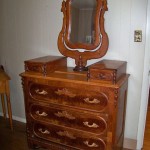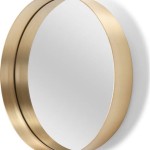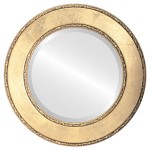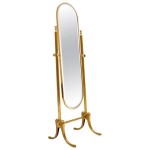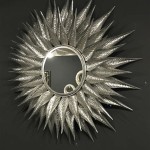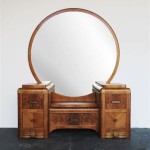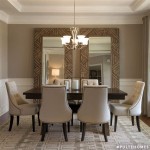Bathroom Framed Mirrors: A Guide to Selection and Style
Bathroom framed mirrors serve both functional and aesthetic purposes. They provide the necessary reflection for daily grooming routines while also contributing significantly to the overall bathroom design. Choosing the right framed mirror involves considering factors such as size, style, frame material, and existing bathroom decor.
Key Considerations When Choosing a Bathroom Framed Mirror
Several factors influence the selection of an appropriate bathroom framed mirror. Careful consideration of these elements ensures a cohesive and functional addition to the bathroom space.
- Size and Proportion: The mirror's dimensions should be proportional to the vanity size and the overall bathroom space. A large mirror in a small bathroom can feel overwhelming, while a small mirror above a large vanity can appear disproportionate.
- Frame Material and Finish: Frame materials range from wood and metal to plastic and composite materials. The finish should complement existing bathroom fixtures and hardware. Consider moisture resistance, especially for wood frames.
- Style and Design: Mirror frames are available in a wide array of styles, from ornate and traditional to sleek and modern. The chosen style should harmonize with the overall bathroom aesthetic.
- Mirror Type: While standard mirrors are common, options like magnifying mirrors or mirrors with integrated lighting offer additional functionality.
- Installation Method: Different mirrors have varying installation requirements. Ensure the chosen method is compatible with the bathroom wall and existing fixtures.
Exploring Frame Materials and Finishes
The frame material significantly impacts the mirror's appearance, durability, and maintenance requirements. Understanding the characteristics of different materials is crucial for informed decision-making.
- Wood Frames: Wood offers a classic and versatile option, available in various stains and finishes. Proper sealing is essential to prevent moisture damage in the bathroom environment.
- Metal Frames: Metal frames, such as aluminum, brass, or stainless steel, provide a sleek and modern look. They are generally durable and resistant to moisture.
- Plastic Frames: Plastic frames are a cost-effective and lightweight option. They are available in various colors and finishes but may not offer the same level of durability as wood or metal.
- Composite Frames: Composite materials combine the benefits of different materials, offering durability, moisture resistance, and design flexibility.
Matching Mirror Styles to Bathroom Decor
The mirror's style should complement the existing bathroom decor, creating a harmonious and visually appealing space.
- Traditional Styles: Ornate frames with intricate details complement traditional bathroom designs. Wood frames with darker finishes are often preferred in these settings.
- Modern Styles: Sleek, minimalist frames with clean lines suit modern bathrooms. Metal frames or simple wood frames with lighter finishes are common choices.
- Transitional Styles: Transitional styles blend elements of traditional and modern design. Frames with simple detailing and neutral finishes work well in these spaces.
- Rustic Styles: Reclaimed wood frames or frames with a distressed finish enhance rustic bathroom aesthetics.
- Glamorous Styles: Mirrored frames or frames with metallic finishes add a touch of glamour to the bathroom.
Enhancing Functionality with Mirror Features
Beyond their primary reflective purpose, bathroom mirrors can offer additional functionality to enhance the user experience.
- Integrated Lighting: Mirrors with built-in LED lights provide task lighting for grooming activities.
- Magnifying Mirrors: Magnifying mirrors offer a closer view for detailed grooming tasks.
- Defogging Technology: Mirrors with defogging technology prevent condensation buildup, ensuring clear visibility even after a hot shower.
- Smart Mirrors: Some mirrors integrate smart technology, allowing users to access information, play music, or control other smart home devices.
Installation Methods and Considerations
Proper installation is critical for both safety and aesthetics. Different mirror types require various installation methods.
- Wall-Mounted Mirrors: Most framed mirrors are designed for wall mounting using brackets or clips.
- Recessed Mirrors: Recessed mirrors are installed within the wall cavity, creating a flush and integrated look.
- Leaning Mirrors: Larger framed mirrors can be leaned against the wall for a more casual and flexible arrangement.
Maintaining and Cleaning Bathroom Framed Mirrors
Regular cleaning and maintenance ensure the longevity and appearance of the bathroom framed mirror.
- Regular Cleaning: Clean the mirror surface regularly with a glass cleaner and a soft cloth.
- Frame Care: Clean the frame according to the material. Wood frames may require occasional polishing or re-sealing.
- Preventing Moisture Damage: Ensure adequate ventilation in the bathroom to minimize moisture exposure to the frame.
Budgeting for a Bathroom Framed Mirror
Bathroom framed mirrors are available at various price points. Factors such as size, frame material, and additional features influence the overall cost.
- Setting a Budget: Determine a realistic budget before beginning the selection process.
- Considering Long-Term Value: While cost is a factor, prioritize quality and durability for long-term value.

Diy Framed Bathroom Mirrors Living With Lady

Framed Bathroom Mirror Crazy Wonderful

Mirror Frame Diy How To Update A Basic Bathroom Our Faux Farmhouse

Jacobean Wood Framed Mirror Handmade Rustic Bath Wall Vanity Light Large 18x18 40x30 Custom Sizes Remodeling

How To Frame Out That Builder Basic Bathroom Mirror For 20 Or Less Design Mirrors Diy

Framed Mirror Bertch Cabinets

Beautifully Framed Bathroom Mirrors Hallstrom Home

Custom Framed Mirrors Bathroom And Dining Room At Framedart Com

Diy Framed Bathroom Mirrors Liz Marie Blog

How To Frame A Mirror

